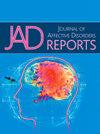The genetic overlap between major depressive disorder, white blood cell counts and interleukin 6
Q3 Psychology
引用次数: 0
Abstract
Background
Immune dysregulation may contribute to the pathophysiology of major depressive disorder (MDD). Here we aimed to identify genetic architecture jointly associated with MDD, white blood cell (WBC) count and interleukin 6 (IL-6) levels.
Methods
Using genome-wide association studies summary statistics on MDD (330,173 cases and 727,595 controls), WBC counts (nmax = 563,946) and IL-6 (n = 52,654), we performed linkage disequilibrium (LD) score regression, bivariate causal mixture model (MiXeR), conjunctional false discovery rate (conjFDR) and Mendelian randomization (MR) analyses. Additionally, we used an independent MDD dataset (9,582 cases and 84,670 controls) from the Norwegian Mother, Father and Child Cohort Study for polygenic risk score (PRS) analyses.
Findings
We found a significant positive genetic correlation (rg = 0.22) between MDD and IL-6. MiXeR estimates indicated substantial differences in the polygenicity of MDD (13.7K variants), WBC subgroups (0.8K-1.8K variants), and IL-6 (0.2K variants), with 10.1 %-31.4 % of the variants influencing WBC subgroups overlapping with MDD. We identified MDD risk loci shared with basophils (8), eosinophils (17), lymphocytes (23), monocytes (14), neutrophils (20), and total WBC counts (20), as well as two loci shared between MDD and IL-6, at conjFDR <0.05. PRS analysis showed a weak, but significantly increased risk for MDD dependent on monocyte count.
Limitations
The analyses only included European ancestry samples, and the causal genes associated with the identified genetic loci were not experimentally validated.
Conclusions
MDD shares genetic underpinnings with immune system components, which implicates immune-mediated pathways in the pathophysiology of MDD. However, this connection may only be relevant for a minority of patients.
Abbreviations
MDD, major depressive disorder; White blood cell, WBC; MiXeR, bivariate causal mixture model; conjFDR, conjunctional false discovery rate; condFDR, conditional FDR; LD linkage disequilibrium; PRS, polygenic risk score; MoBa, Norwegian Mother, Father and Child Cohort Study
重度抑郁症、白细胞计数和白细胞介素6之间的基因重叠
背景免疫失调可能与重度抑郁症(MDD)的病理生理有关。在这里,我们旨在确定与MDD、白细胞(WBC)计数和白细胞介素6 (IL-6)水平共同相关的遗传结构。方法采用全基因组关联研究,对MDD(330,173例,对照727,595例)、WBC计数(nmax = 563,946)和IL-6 (n = 52,654)进行汇总统计,进行连锁不平衡(LD)评分回归、二元因果混合模型(MiXeR)、联合错误发现率(conjtional fdr)和孟德尔随机化(MR)分析。此外,我们使用来自挪威母亲,父亲和儿童队列研究的独立MDD数据集(9,582例和84,670例对照)进行多基因风险评分(PRS)分析。结果MDD与IL-6呈显著正相关(rg = 0.22)。MiXeR估计显示MDD (13.7K变体)、WBC亚群(0.8K-1.8K变体)和IL-6 (0.2K变体)的多基因性存在实质性差异,10.1% - 31.4%的变异影响WBC亚群与MDD重叠。我们发现MDD的危险位点与嗜碱性粒细胞(8)、嗜酸性粒细胞(17)、淋巴细胞(23)、单核细胞(14)、中性粒细胞(20)和白细胞总数(20)共有,MDD和IL-6之间有两个位点共有,(fdr <0.05)。PRS分析显示,单核细胞计数对MDD的影响微弱,但显著增加。局限性:该分析仅包括欧洲血统样本,并且与已鉴定的遗传位点相关的因果基因未经过实验验证。结论smdd与免疫系统成分具有共同的遗传基础,提示免疫介导途径参与了MDD的病理生理机制。然而,这种联系可能只与少数患者有关。缩写smdd,重度抑郁症;白细胞(WBC);MiXeR,二元因果混合模型;cond_fdr,连接错误发现率;condFDR,有条件的罗斯福;LD连杆不平衡;PRS,多基因风险评分;MoBa,挪威母亲,父亲和儿童队列研究
本文章由计算机程序翻译,如有差异,请以英文原文为准。
求助全文
约1分钟内获得全文
求助全文
来源期刊

Journal of Affective Disorders Reports
Psychology-Clinical Psychology
CiteScore
3.80
自引率
0.00%
发文量
137
审稿时长
134 days
 求助内容:
求助内容: 应助结果提醒方式:
应助结果提醒方式:


